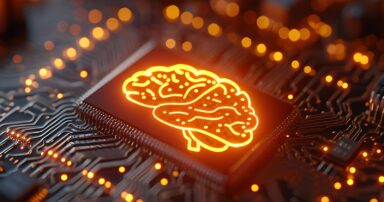US Copyright Office Highlights Copyright Risks in Generative AI
The United States Copyright Office has released a report outlining significant copyright risks throughout the generative AI development lifecycle. The report responds to growing concerns about AI systems using copyrighted material, often without permission, for training.
While the Copyright Office doesn't create legal rulings, its reports provide crucial legal and technical guidance that can influence legislation and court decisions. The report raises several key concerns for AI technology companies.
Key Copyright Concerns
- Data Acquisition and Training: The report suggests that acquiring copyrighted data and training AI models on it could constitute copyright infringement.
- Copying During Training: The report challenges the industry claim that training doesn't involve copying. It notes that creating datasets and adjusting model weights can involve multiple copies of copyrighted works.
- Reproduction Rights: The report emphasizes that AI models memorizing and reproducing copyrighted content, even unintentionally, may infringe reproduction rights.
- Transformative Use: While acknowledging some AI training might be transformative, the report rejects the argument that it's inherently transformative simply because it resembles human learning.
Copyright Implications at Every Stage of AI Development
The report details potential copyright issues at each stage of AI development:
A. Data Collection and Curation: Creating training datasets with copyrighted works clearly implicates reproduction rights.
B. Training: Training involves copying data to storage, temporarily reproducing works during processing, and potentially embedding copies within model weights. Copying model weights could also constitute infringement.
C. Retrieval-Augmented Generation (RAG): RAG, whether using internal databases or external sources, involves copying copyrighted material, potentially leading to infringement.
D. Outputs: Generative AI models sometimes produce outputs that closely resemble or replicate copyrighted works, potentially infringing reproduction and derivative work rights.
The report identifies infringement risks at every stage, from data collection and training to output generation. These findings, while not legally binding, could inform future legislation and court decisions.
Key Takeaways
- AI training and data acquisition may constitute copyright infringement.
- The Copyright Office rejects industry defenses based on the absence of copying and the analogy to human learning.
- The report narrows the scope of fair use and transformative use defenses.
- Copyright concerns exist at every stage of AI development, including data collection, training, RAG, and outputs.
- Memorization of copyrighted material within model weights raises further infringement risks.
- AI-generated outputs that closely resemble existing works may infringe reproduction and derivative work rights.
- RAG methods, regardless of their implementation, carry potential infringement risks.
This report significantly challenges the legality of using copyrighted data without permission in generative AI. It questions common industry practices and interpretations of fair use. While not a legal ruling, the report offers important guidance for lawmakers and courts grappling with the complex intersection of AI and copyright law.








